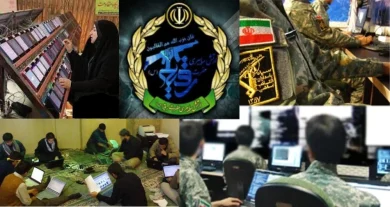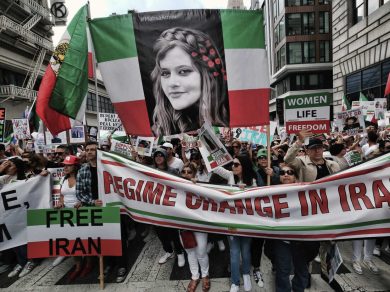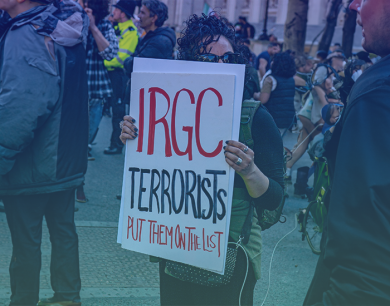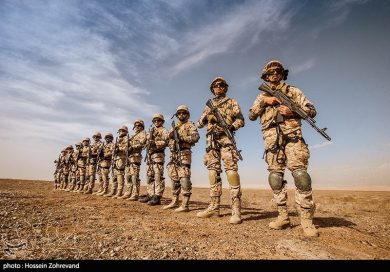The Islamic Revolutionary Guard Corps (IRGC) is not only a military and ideological force but also a dominant economic entity in Iran. Over the past four decades, the IRGC has expanded its reach into virtually every sector of the Iranian economy, creating a vast financial network that funds its operations, domestic repression, and regional destabilization efforts. Through construction projects, oil and gas ventures, smuggling operations, and international financial networks, the IRGC has consolidated immense wealth, leveraging it to strengthen its grip on power.
This article delves into the economic empire of the IRGC, how its financial networks operate, and the broader implications for Iran’s society and the international community.
1. Origins of the IRGC’s Economic Power
A. Post-Revolution Opportunities
• Established Purpose: Founded after the 1979 Islamic Revolution, the IRGC’s initial purpose was to safeguard the regime and its revolutionary ideals.
• Expansion into Economy: Post-revolution instability and the Iran-Iraq War (1980–1988) created opportunities for the IRGC to gain economic influence. The organization was tasked with reconstruction efforts, granting it access to lucrative contracts and infrastructure projects.
B. Privatization Program
• State Asset Takeover: During the 2000s, Iran’s privatization program led to the transfer of state-owned assets to entities affiliated with the IRGC under the guise of reform.
• Economic Monopoly: This process allowed the IRGC to dominate strategic industries, including energy, construction, and telecommunications.
2. The IRGC’s Key Financial Networks
A. Khatam al-Anbiya Construction Headquarters
• Overview: Khatam al-Anbiya is the IRGC’s economic arm, operating as one of Iran’s largest engineering and construction firms.
• Sectors: The company manages infrastructure projects such as roads, bridges, dams, and pipelines, often winning no-bid government contracts.
• Revenue Generation: With billions of dollars in annual revenue, Khatam al-Anbiya funds IRGC operations and its security apparatus.
B. Oil and Gas Sector
• Control Over Resources: The IRGC plays a critical role in Iran’s oil and gas industry, including exploration, extraction, and smuggling operations.
• Sanctions Evasion: By managing covert oil shipments and black-market sales, the IRGC circumvents international sanctions to generate significant revenue.
C. Smuggling Networks
• Illicit Trade: The IRGC oversees smuggling operations involving goods like fuel, cigarettes, and luxury items, bypassing legal trade channels.
• Border Control: Its control over Iran’s borders facilitates these operations, allowing it to profit while depriving the state of legitimate revenue.
D. Financial Institutions and Front Companies
• Banks and Exchanges: The IRGC uses banks and currency exchange networks to launder money and fund its operations.
• International Fronts: IRGC-affiliated companies operate globally to obscure financial activities and evade detection, often under the guise of legitimate businesses.
3. Impact on Iran’s Economy
A. Monopolization and Corruption
• Crowding Out Private Sector: The IRGC’s dominance stifles competition, preventing independent businesses from thriving and discouraging foreign investment.
• Corruption: Widespread corruption within IRGC-controlled entities diverts public funds for private gain, exacerbating economic inefficiencies.
B. Inequality and Public Discontent
• Wealth Concentration: While the IRGC profits, ordinary Iranians face rising unemployment, inflation, and poverty.
• Economic Mismanagement: The IRGC prioritizes its own interests over national development, leading to poorly executed projects and wasted resources.
C. Funding Repression
• Internal Security: Revenue from the IRGC’s financial networks funds the regime’s security forces, which suppress protests and silence dissent.
• Media Control: The IRGC uses its wealth to control state media and promote propaganda, shaping public opinion to maintain its power.
4. Regional and Global Implications
A. Funding Proxy Groups
• Support for Militias: The IRGC channels funds to regional proxies like Hezbollah in Lebanon, the Houthis in Yemen, and militias in Iraq and Syria, destabilizing the Middle East.
• Arms Transfers: Revenue is used to supply weapons and training to allied groups, escalating conflicts and undermining regional security.
B. Sanctions Evasion
• Global Networks: The IRGC employs a network of front companies and covert operations to evade international sanctions, undermining their effectiveness.
• Financial Crimes: Activities like money laundering and smuggling fuel illicit economies, complicating global counterterrorism efforts.
5. Countering the IRGC’s Economic Influence
A. Targeted Sanctions
• Focusing on Financial Networks: Sanctions targeting IRGC-affiliated entities, individuals, and front companies can disrupt its revenue streams.
• Global Coordination: Collaborative efforts among nations ensure the enforcement of sanctions and the closure of loopholes.
B. Exposing Corruption
• Transparency Initiatives: Investigative reporting and international oversight can expose the IRGC’s illicit activities and increase accountability.
• Public Awareness: Educating Iranian citizens about the IRGC’s role in economic mismanagement can foster domestic resistance.
C. Supporting Civil Society
• Empowering Activists: Providing resources and training to Iranian activists helps counter the IRGC’s narrative and strengthens grassroots movements.
• Economic Alternatives: Supporting independent businesses and entrepreneurs can reduce reliance on IRGC-controlled industries.
6. Success Stories in Countering the IRGC
A. Sanctions on Khatam al-Anbiya
• Impact: International sanctions on Khatam al-Anbiya have hindered its ability to secure global contracts and access foreign technology.
• Lessons Learned: Targeted measures are more effective when paired with monitoring and enforcement.
B. Disruption of Smuggling Networks
• Maritime Interventions: Seizures of Iranian oil shipments have exposed the IRGC’s covert operations and disrupted revenue flows.
• Collaborative Efforts: International partnerships have enhanced the ability to track and intercept illicit activities.
7. The Path Forward
To effectively counter the IRGC’s economic influence, the international community and Iranian civil society must adopt a multi-pronged approach:
1. Enhance Sanction Enforcement: Strengthen monitoring mechanisms to prevent sanctions evasion and penalize violators.
2. Support Transparency Initiatives: Invest in investigative efforts to expose IRGC corruption and financial networks.
3. Promote Economic Alternatives: Foster opportunities for independent businesses to reduce the IRGC’s economic dominance.
4. Build Global Coalitions: Collaborate across borders to dismantle the IRGC’s international financial operations.
Conclusion
The IRGC’s financial networks are at the heart of its power, funding oppression at home and instability abroad. By monopolizing key industries, evading sanctions, and exploiting global markets, the IRGC has created an economic empire that sustains its grip on Iran. However, through targeted sanctions, international cooperation, and grassroots resistance, it is possible to weaken the IRGC’s economic stranglehold and pave the way for a freer, more equitable Iran.
Join Our Newsletter!
Stay informed with the latest updates, news, and ways to take action in the fight for justice and global security. Sign up now to get updates delivered straight to your inbox!





